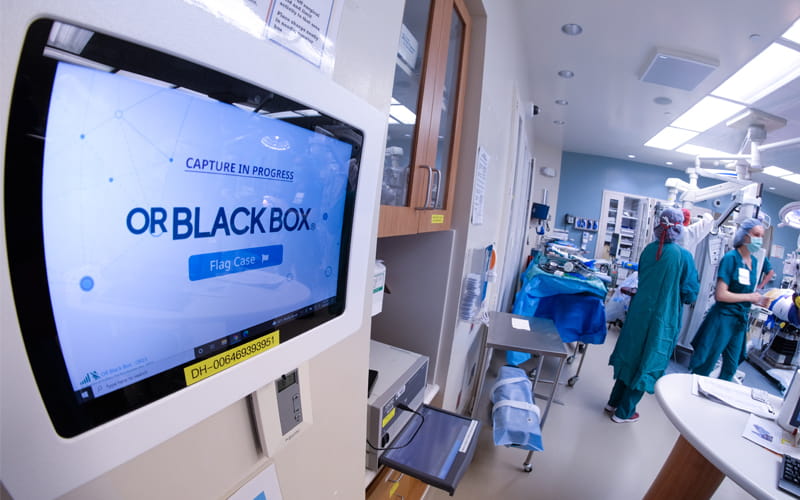
Ever since “To Err Is Human” was published in 2000, the health care industry has looked to the aviation industry as a model for ensuring safety. Hospitals have been charting a path to safety, sparking life-changing innovations and interventions over the last two decades.
The latest aviation improvement to land in health care is the “black box”—an ominous nickname for propitious technology that records everything during a flight, including equipment data, cockpit conversations and everything in between. In the event of a malfunction, the crew can review what went wrong to prevent it next time.
The technology makes perfect sense in a hospital operating room, where life hangs in the balance. From miscommunication to a wrong technique, errors during surgery have a variety of causes and can have devastating consequences. More than 50% of unintentional harm to hospitalized patients occurs in the operating room, and 65% of harm incidents are due to human error.
Inspired by aviation’s flight recorder, professor of surgery at Stanford Medicine, Teodor Grantcharov, M.D., Ph.D., developed a similar device, called the OR Black Box, to apply to hospital operating rooms with the hope of improving quality and efficiency.
“To drive safe and efficient operations, hospital leaders need data,” Grantcharov says. “Our ambition for OR Black Box is very bold: to make our operating rooms the safest and most efficient, collaborative and supportive work environment in the world.”
How it works
The OR Black Box is not a box per se, but an entire monitoring system made up of cameras, sensors and recording speakers that together capture every detail in the operating room—anesthesiologic, surgical and environmental—which runs continuously 24 hours a day.
Currently, operating room data is captured manually by staff in the electronic health system, which means it’s highly limited and subject to bias and error, not to mention tedious and time-consuming, Grantcharov says. The OR Black Box technology, on the other hand, “uses machine-generated, objective, precise and unbiased data around efficiency, compliance and safety.”
To make use of all that data, artificial intelligence processes the information within hundreds of thousands of parameters and automatically identifies opportunities for improvement, turning the data into “meaningful, actionable information that can be used by doctors, nurses and hospital leaders to improve.”
Teams can use the data to evaluate any number of things that affect quality or efficiency: a surgeon’s technique, team communication, distance traveled, arrangement of tools, time to turnover, compliance to protocol—from the most menial task to the most marginal detail, every single factor involved in the execution of a surgery can be subject to analysis and improvement.
From reactive to proactive
Though the black box can help evaluate adverse events, it is less about looking backward at what went wrong and more about looking forward to what should go right.
“The OR Black Box allows objective review of not only cases that resulted in morbidity and mortality but also cases with near misses that were identified and rectified as a result of exceptional teamwork,” Grantcharov explains. “It allows measurement of processes and identifying risks before they have resulted in adverse outcomes. It helps shift surgical safety from reactive (current state) to proactive.”
In addition to quality and efficiency, the OR Black Box has another surprising benefit. “It allows teams to reflect on their successes and challenges and improve culture and collaboration, which is so important for the quality of life and work experience of front-line staff—now more than ever,” Grantcharov says.
Although data and cameras capture everything, all identifiable information of staff and patients is irreversibly removed, and the video file disappears after 30 days.
“The foundational principle for implementing the OR Black Box is that the process is confidential and non-punitive,” Grantcharov assures. “Part of the cultural shift observed at multiple organizations that have implemented the OR Black Box is the transition from a focus on individuals to the system when analyzing performance and safety.”
About two dozen adult hospitals have begun using the OR Black Box in the last few years, and several children’s hospitals are in the process of installing them. Stanford Medicine plans to expand the rollout of the OR Black Box to its children’s hospital, Lucile Packard Children’s Hospital, in the future.
Grantcharov says, “I have no doubt that front-line staff and hospital leaders will find this technology as useful in children’s hospitals as it has been in improving efficiency and quality in adult hospitals.”


